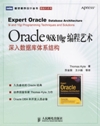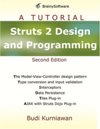作者:David R. Musser, Atul Saini
出版日期:April 6, 2001
出版社:Addison Wesley
页数:560
ISBN:ISBN-10: 0201379236 ISBN-13: 978-0201379235
文件格式:PDF
Product Description
(Pearson Education) A tutorial and reference, offering readers athorough description of each element of the Standard Template Libraryand numerous sample applications. Reflects all of the changes made tothe STL for the final ANSI/ISO C++ language standard. Also includes acompanion Web site. Previous edition: c1996. DLC: C++ (Computer programlanguage).
From the Inside Flap
In the five years since the first edition of STL Tutorial andReference Guide appeared, the C++ language standard has been finalizedand officially accepted, C++ compiler vendors have made great progressin bringing their compilers into compliance with the standard, anddozens of other books and magazine articles have appeared that describeand explain the standardized language and libraries. Many of thesebooks and articles have highlighted the Standard Template Library (STL)as the most significant addition to the standard. Some hailed it, as wedid in this book’s first edition, as having the potential torevolutionize the way a large number of people program. The past fiveyears have already seen much of that potential realized, with the firstedition of this book playing a key role for tens of thousands ofprogrammers. We wrote in the preface of the first edition that thereare five reasons why the STL components could become some of the mostwidely used software in existence:
C++ is becoming one of the most widely used programming languages(in large part due to the support it provides for building and usingcomponent libraries). Since STL has been incorporated into the ANSI/ISOstandard for C++ and its libraries, compiler vendors are making it partof their standard distributions. All components in STL are generic,meaning that they are adaptable (by language-supported compile-timetechniques) to many different uses. The generality of STL componentshas been achieved without sacrificing efficiency. The design of STLcomponents as fine-grained, interchangeable building blocks makes thema suitable basis for further development of components for specializedareas such as databases, user interfaces, and so forth.






 评论 (0)
评论 (0) 